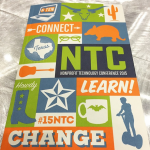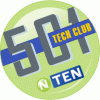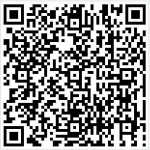This article was originally published on nten.org in January
One recent sunny afternoon in Austin, I gathered with a small crowd of NTEN 501 Club NPTechies to lunch and learn about digital currencies and payments innovations.
We were there to talk about Bitcoin—what it is (digital cash), what it isn’t (internet not required), why you would want to take advantage of it (0% transaction fee, anyone?), and what you need to know before implementing (multi signature wallets!)
The informal discussion was led by presenters, David J Neff, Digital Strategy Manager at PwC and Jacob Parks, Legal Researcher at the Association of Certified Fraud Examiners. (You can watch the whole thing on Capital Factory’s YouTube or read my blog post for a summary.)
Most importantly, I learned that tech-savvy charities need to address changes happening in the payments landscape NOW.
Timing is perfect for you to learn from trailblazing organizations already breaking ground on the new frontiers, while still being early enough to claim advantages for your own cause. For example, digital currencies, such as Bitcoin, offer an excellent fundraising currency for micropayments and microlending because they provide a platform where you can give $0.25 without credit card fees eating it up. Organization who have a good strategy in place will be poised to gain exposure to new sources of support with little accounting risk.
Digital currencies aren’t the only thing shaking up the payments landscape. Changes in physical security, such as chip-and-PIN (smartcard) technology, are already being used widely in Canada and Europe and will be expanding in the United States. ApplePay and others are radically increasing the adoption of tap-to-pay NFC platforms, especially in event-based scenarios. Will your nonprofit be ready?
All this innovation has not gone unnoticed at the major nptech software companies, either. PayPal has added digital currencies and wallets to its lineup for merchants and more is on the way. Even Microsoft is accepting Bitcoin! Software providers who want to keep their customers are looking for creative ways to integrate more payment options into their solutions. As they do, more charities will have more ways to connect with donors within existing toolsets.
At the 2015 Nonprofit Technology Conference, we are going to take this discussion to the next level with an expanded panel of experts to talk about how payments innovations are changing the way organizations engage with their constituents. David J Neff will join NTEN veteran, Jason Shim from Pathways to Education Canada, as well as pros Alissa Ruehl from Blackbaud and Robin Dupont from PayPal in a panel you won’t want to miss!
See you in at #15NTC
NTC15 Session #1048:
Cryptocurrency that Cares: A primer on how digital currencies and payments innovations can help your organization
Follow along on Twitter with #15NTCmerchant on Wed, Mar 4 1:30pm – 3pm CT







